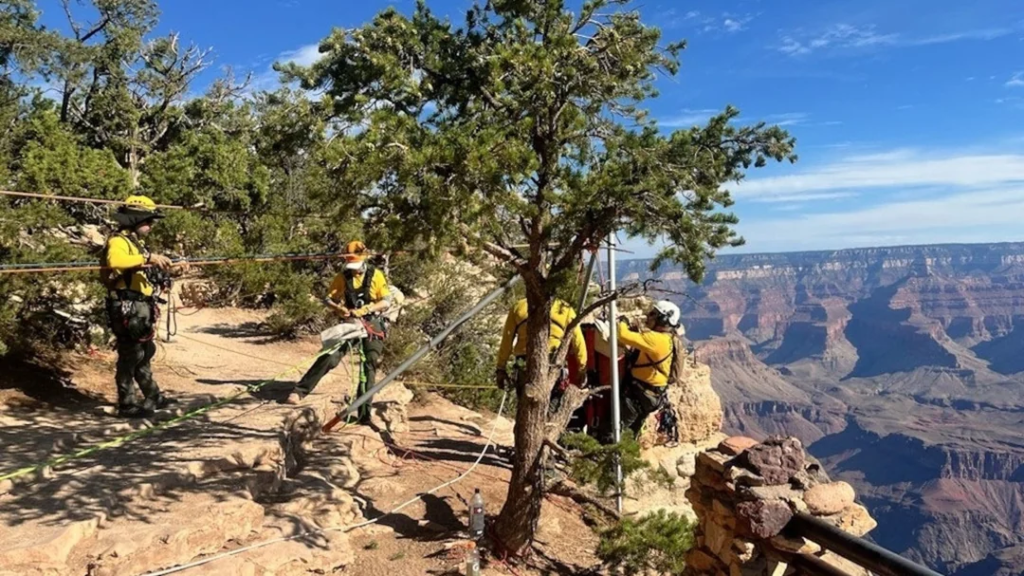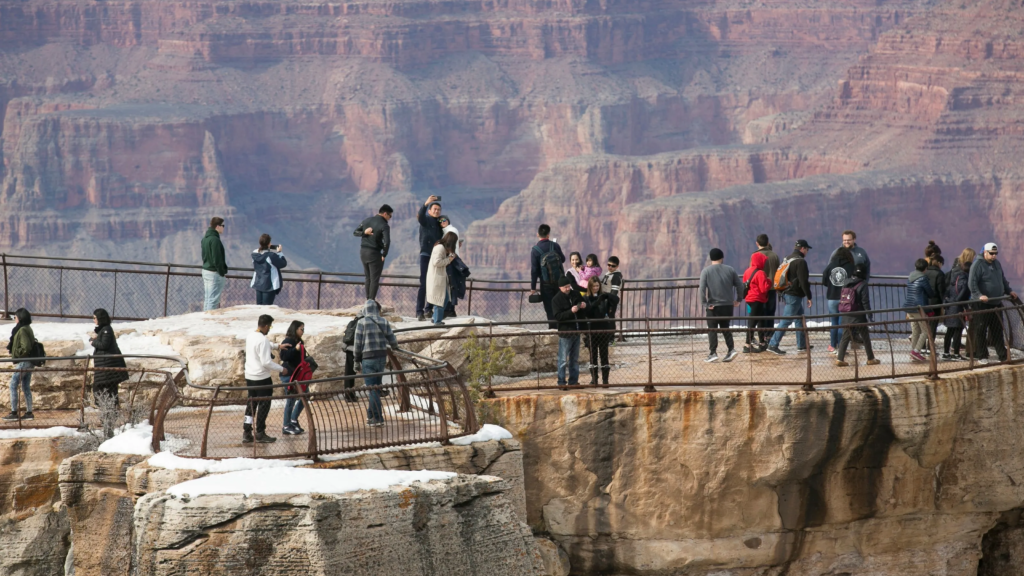A 41-year-old man tragically died while attempting the iconic rim-to-rim hike across the Grand Canyon, according to the National Park Service (NPS). The incident happened on May 18 when the man collapsed while climbing the South Kaibab Trail, about one mile from the Colorado River.
The hiker was identified as Corey Shapiro from Phoenix, Arizona. He was attempting to hike from the North Rim to the South Rim in just one day—a journey of nearly 24 miles, involving steep elevation changes and extreme desert heat.
The Trail: Beautiful but Brutal
The rim-to-rim trail in the Grand Canyon is famous for its stunning beauty and physical challenge. But it’s also dangerous for those who are unprepared. The hike includes more than 10,000 feet of elevation change and temperatures that can rise sharply during the day.

According to the Grand Canyon National Park website, this trail should only be attempted in one day by experienced, trained, and well-conditioned hikers. The Park Service strongly recommends a two-day hike with an overnight stop at Phantom Ranch or Bright Angel Campground.
Shapiro reportedly began his hike at the North Rim early in the morning. By the time he reached the inner canyon and started climbing to the South Rim, temperatures had risen significantly. High heat, combined with physical exertion, likely contributed to his condition.
Emergency Response Was Immediate, But It Was Too Late
At around 2 p.m., the Grand Canyon Regional Communications Center received a report of an unresponsive hiker on the South Kaibab Trail. Emergency personnel were quickly dispatched. Despite CPR efforts and a rapid response, Shapiro could not be revived.
“Responders arrived quickly, but unfortunately, resuscitation efforts were unsuccessful,” said an NPS spokesperson. The exact cause of death is under investigation, but heat-related illness is considered a likely factor. It remains unclear whether Shapiro had enough water, electrolytes, or rest during the hike.
Heat-Related Risks Common in the Grand Canyon
Heat-related illnesses are among the top reasons for emergency rescues in the Grand Canyon. These include heat exhaustion and heat stroke, which can become deadly if not treated immediately.
Temperatures at the bottom of the canyon can be over 20°F higher than at the rims. In warmer months, it often crosses 100°F (38°C). Even experienced hikers can suffer if they are not prepared for these extreme conditions.
The Centers for Disease Control and Prevention advises avoiding physical activity during the hottest parts of the day and stresses the importance of hydration and rest.
National Park Officials Urge Hikers to Plan Safely
Following the incident, the National Park Service issued a reminder to all visitors about the risks of hiking in extreme conditions.

“Rim-to-rim in one day is not something we recommend unless you are trained, acclimated, and experienced,” said a Park representative. “Plan ahead, take your time, and bring the right gear.”
The Park Service recommends breaking the hike into two days and carrying supplies such as water, food, sun protection, and a map. Information about safe hiking is available on the NPS Grand Canyon Hike Smart page.
Hikers Are Reminded to Be Prepared at All Times
If you are considering hiking in the Grand Canyon, officials recommend these basic safety measures:
- Carry 3–4 liters of water per person
- Bring salty snacks and electrolyte tablets
- Wear UV-protective clothes, a hat, and sunscreen
- Start hiking before sunrise to avoid peak heat
- Always stay on marked trails
- Tell someone your hiking plan and expected return time
These precautions can make a critical difference in high-risk environments like the Grand Canyon.
A Sobering Reminder for the Outdoor Community
This tragic incident has sparked conversations among outdoor enthusiasts and park rangers about the need for better awareness and preparation.
“This isn’t just a hike—it’s a major physical challenge in one of the most extreme environments,” said a professional Grand Canyon guide. “Even fit people underestimate the toll this hike can take.”
Shapiro’s family shared that he had a passion for hiking and nature. While they are devastated by the loss, they said he died doing what he loved. They’ve requested privacy and support during this painful time.
Closing Thoughts: Nature Is Beautiful but Demands Respect
The Grand Canyon’s rim-to-rim trail is a powerful symbol of adventure, beauty, and endurance. But it’s also a reminder that nature must be respected at all times.
Whether you are a beginner or a seasoned hiker, preparation is key. Hydration, timing, and knowing your limits can be the difference between life and death.
To learn more about safe hiking and prepare for your own adventure, visit the National Park Service’s official safety page.
Also Read – Massive Greer Fire Destroys 9,500 Acres in Apache County






